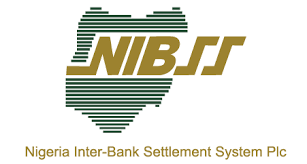The Nigeria Inter-Bank Settlement System (NIBSS) Plc. was incorporated as a public limited liability company in 1993 to handle inter-bank payments and eliminate possible bottlenecks connected with inter-bank funds transfer and settlement.
However, despite its incorporation in 1993, the NIBSS commenced operation in June 1994, and all licensed banks in Nigeria, including the Central Bank of Nigeria (CBN), have the NIBSS license to handle inter-bank payments.
Generally, the NIBSS has a specialty in automated processing, fund transfer instructions, and settlement of payments. Furthermore, NIBSS is responsible for the certification and re-certification of all payment terminals and applications in the banking industry, which ensures that payment terminals deployed in Nigeria meet all required certifications and the minimum POS specifications as defined in the CBN-approved guidelines.
NIBBS is also in charge of the Nigeria Automated Clearing Systems (NACS). NACS processes the electronic clearing of all paper-based instruments like cheques, paper-based instruments, electronic funds transfers, automated direct debits and automated direct credits.
According to their official release, the official functions of NIBBS are:
- To carry on business as a service-oriented institution that provides the mechanism for same-day clearing and settlement of inter-bank transfers and payments;
- Provide infrastructure for the automated processing and settlement of transactions between banks acting on their account as regards deposit placements, Treasury Bills Transaction, and Naira settlement on inter-bank foreign exchange transactions;
- To initiate and develop an integrated nationwide network for electronic or paperless payments, funds transfer, and settlement of transactions.
- To provide a framework for generally increasing efficiency in fund transfer services.
Other sub-services provided by NIBSS include:
- NIBBS Instant Payment
- NIBBS E-Billspay
- Payment terminal service aggregator
- Mobile payment interoperability
- Corporate lounge
- Central payment gateway
- Account verification service
- QR code payment standard
Documentation requirements by the NIBSS include the submission of certified true copies of;
- Memorandum and Articles of Association
- Statement of Authorized Share Capital – formerly CAC 2.4 (now contained in the Status Report)
- Certificate of Incorporation
- Particulars of Directors (formerly CAC 1.1 (now contained in the Status Report)
- Tax Clearance (minimum three years)
The Procedure for Obtaining the NIP API in Nigeria
NIBSS Instant Payments (NIP) is an efficient person-to-person, person-to-business, and business-to-business funds transfer service that guarantees instant value to beneficiaries. NIP was developed in 2011 by the NIBSS, and over the years, Nigerian banks have exposed NIP through their various channels, such as internet banking, bank branches, kiosks, mobile apps, etc.
The procedure for the NIBSS Instant Payments Application Programming Interface
- Formal Letter of Intent
This letter must be addressed to the MD, NIBSS, specifically stating the intent to have a Payment Device/Application certified. The Letter of Intent MUST also contain the following: Application Name, Application Version, Device name and specification (with pictures), Compliance Standards met, the manufacturer, unique features of the device, contact phone number/email of the client, and other necessary information. - Evaluation of Certification Request/Letter of Intent by the Certification Team
- Submission of Requirements by the applicant and the NIBSS Legal Team thoroughly examines the documents provided.
- Provision of Specification Document and Test Details by the certification team.
- After a successful review of the client’s completed test script, the NIBSS Certification Team will schedule a handover session with the client to properly hand over the device and necessary passcodes for the device/application. A brief demo is carried out on the application, and basic checks on customer operations are done to ascertain if the application is ready for testing.
- After device handover, the payment device and/or application gets subjected to rigorous checks and tests by the Certification Team, using the CBN-defined requirements and other internationally recognized benchmarks for standardization of payment devices and applications, as defined in the CBN Guidelines On Operations Of Electronic Payment Channels In Nigeria (April 2016).
- Issuance or Decline of Certificate – After the assessment is conducted, the findings of the certification team are communicated to the Device/Application Owner. A certificate and a statement of compliance were issued and were found to comply with all requirements. Where not compliant, identified defects are communicated to the company, which must be corrected before a certificate and statement of compliance are issued.
It is important to note that the documents carry a validity period of 24 months, after which they become obsolete. Both documents, when received, are to be consistently renewed every 24 months from the Date of Approval mentioned on the documents.
Conclusion
I have highlighted the best ways to integrate with the NIBBS and the documentation you need to make that happen. If you need further help completing this process, feel free to reach out.

